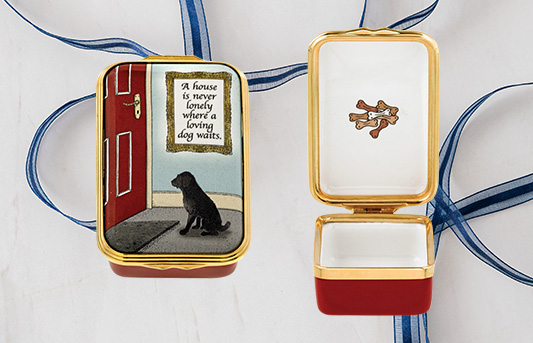Enameling dates as far back as 13th-century BC. Often made from precious metals with inlays of enamel, its history is traceable through jewelry, accessories, and numerous other works. There is no set destination of the practice’s creation as it is documented over thousands of years from all over the world. For instance, the process was noted in the creation of (3rd-century BC) Celtic armor, (13th-century BC) Mycenaean rings, and even the (5th-century BC) Greek depictions of Gods and Goddesses.

A dramatic development in enameling history occurred in the Byzantine Empire between the 6th and 12th-centuries. The cloisonné technique, which is argued to originate in Syria before the 7th-century, was solely in use and almost exclusively done on gold. At the peak of the 10th and 11th-centuries, Byzantine enamellers were designing stunning, highly detailed miniature scenes with a wide range of colors.

As early as the 7th-century, according to scholars, Byzantine work was copied by Lombard craftsmen in Italy and later even England. The famous Alfred Jewel, made for Alfred the Great in the 9th century, is also said to show strong Byzantine influence.

Although in western Europe, cloisonné was overcome by the champlevé technique which utilized a base metal such as copper or bronze. In the late 13th-century, gold and silver objects were being used more often through a new technique – basse-taille enameling. Later in the 15th-century, goldsmiths began using translucent colored enamels creating the effect of stained-glass through the plique-à-jour style.

These techniques, and more, can be found in many other countries such as China, Japan, and India. Enameling is a much-beloved practice that is actively still used today.
Limoges manufacturers and other porcelain brands even work with enameling in their active day-to-day production. Halcyon Days, being one, adopted this ancient practice once again in 1950 through the creation of their enamel boxes. Starting with a copper base, they carefully add the liquid enamel and fire it in the kiln a minimum of five times to set the process. After intense inspection, the design outline is applied and fired for two more minutes to fuse the transfer. Each piece is then painted by a highly skilled artisan, assembled, and carefully inspected to then give the beautiful final products that are Halcyon Days’ enamel boxes.

Enameling has a rich, cultured history and will continue to spread its roots by the people who carry on this ancient art form.
